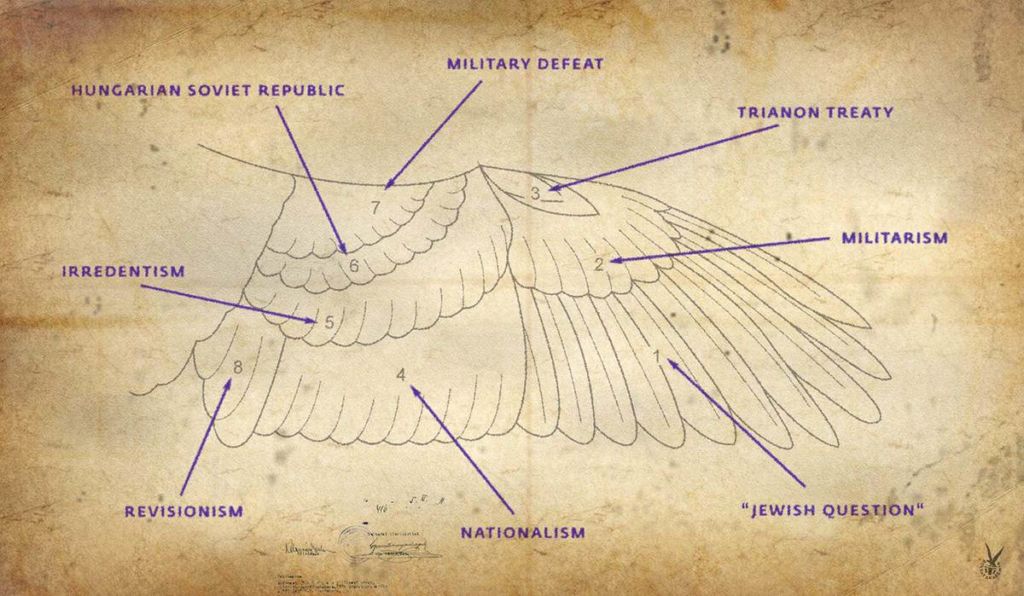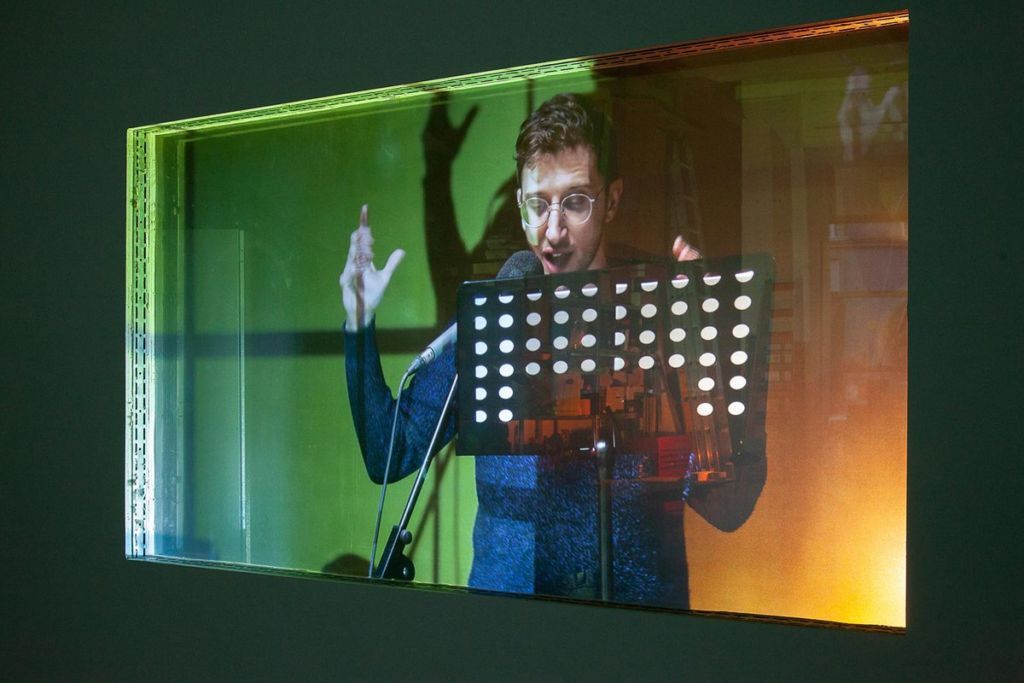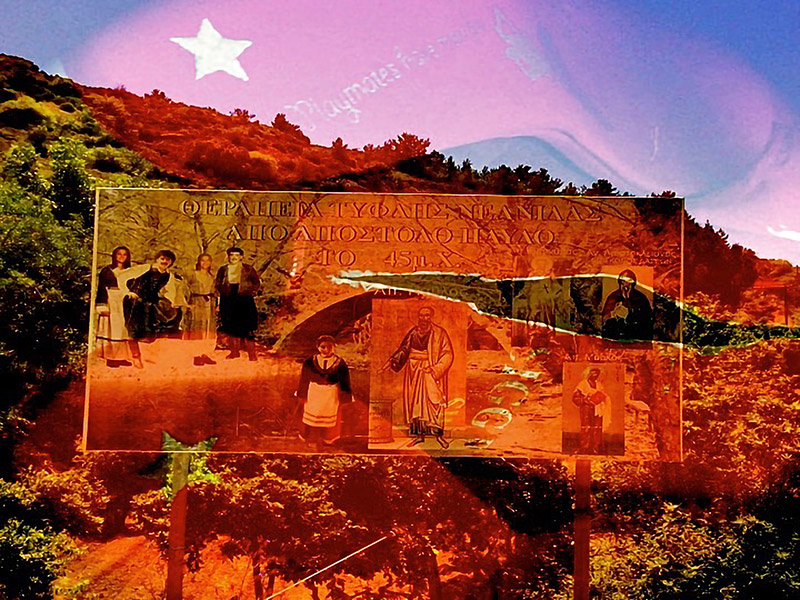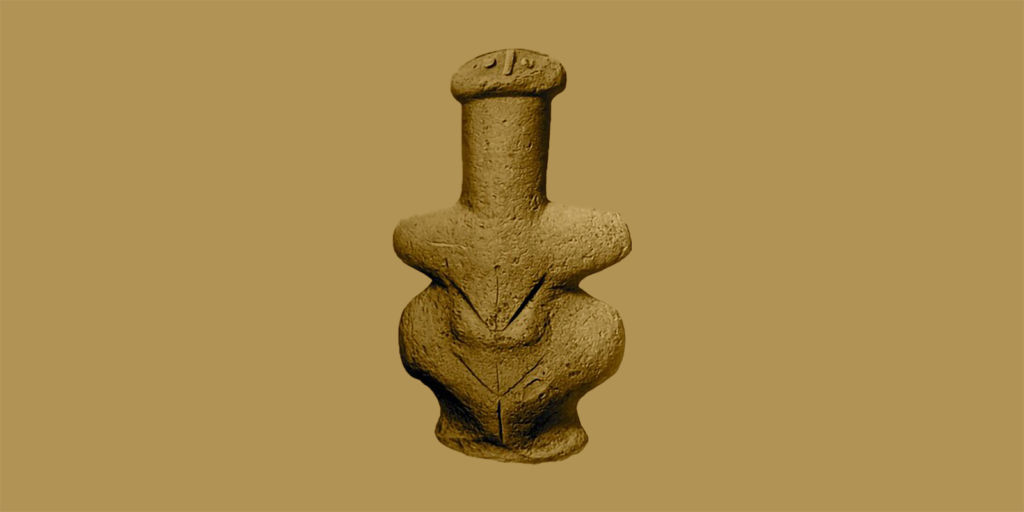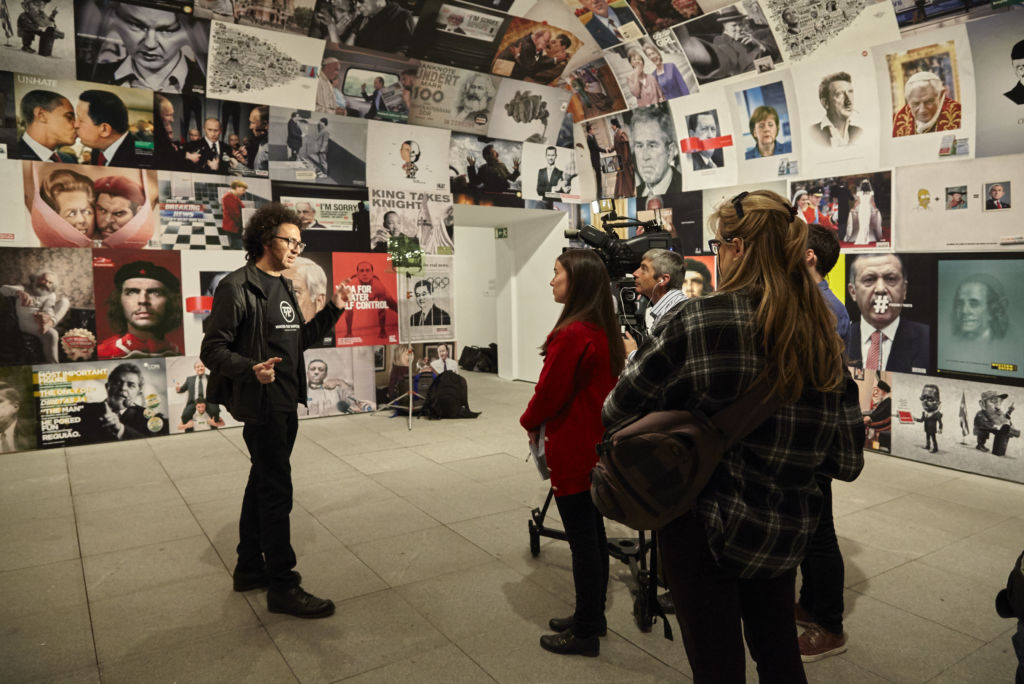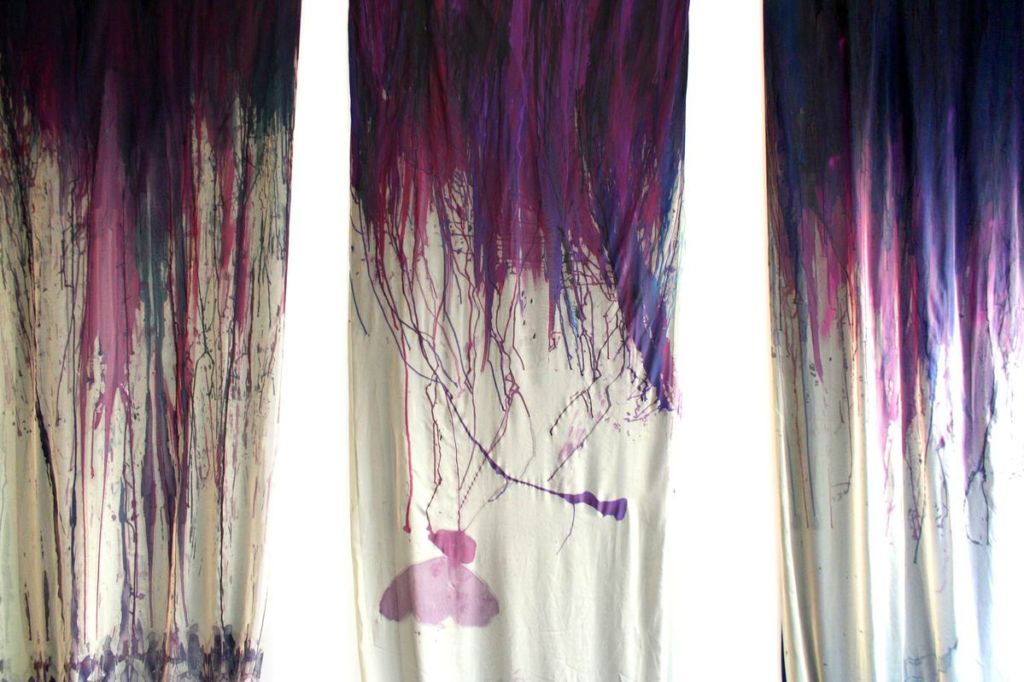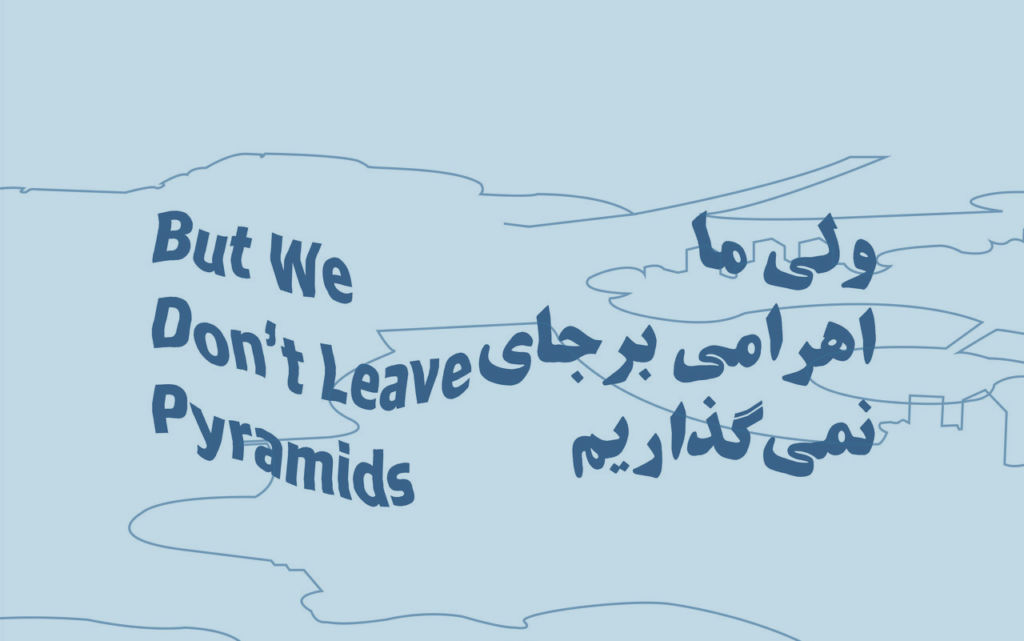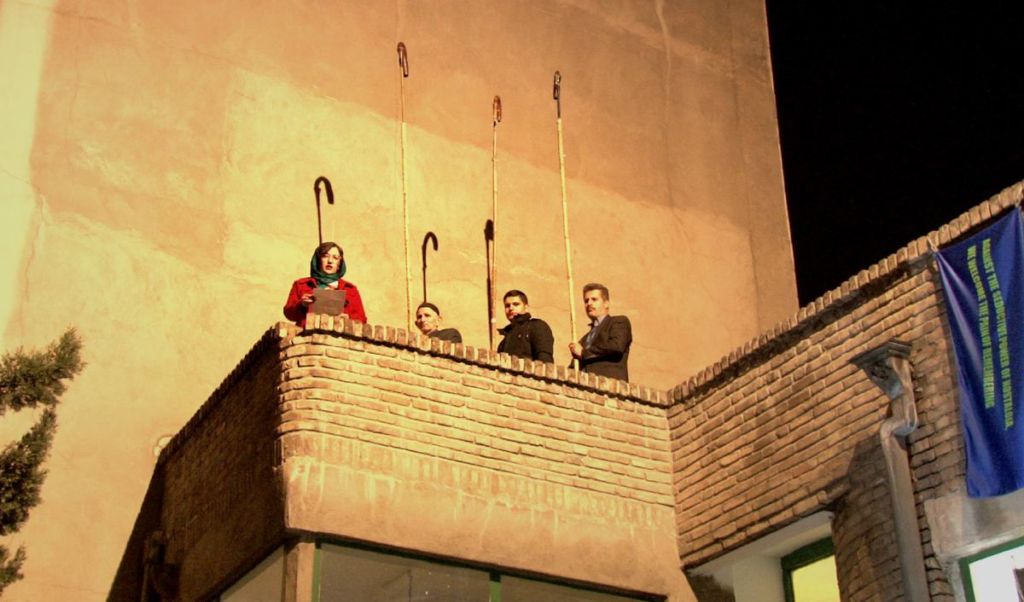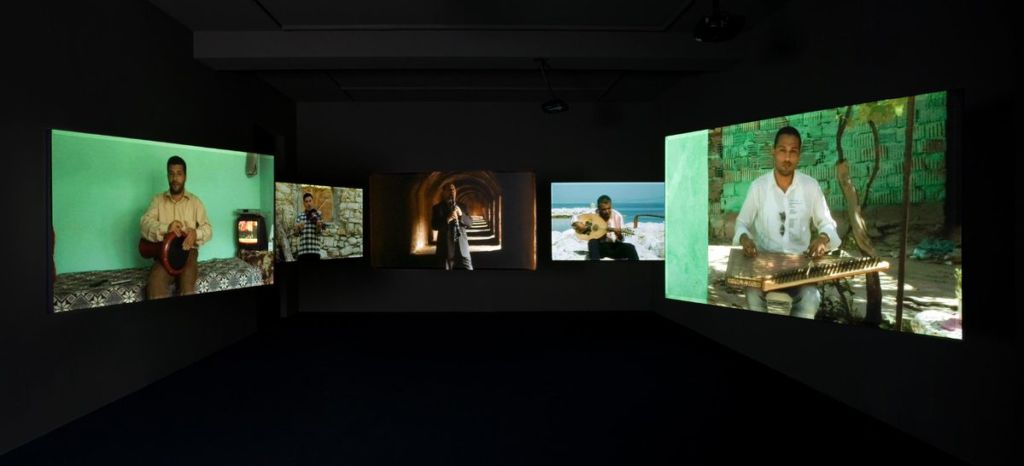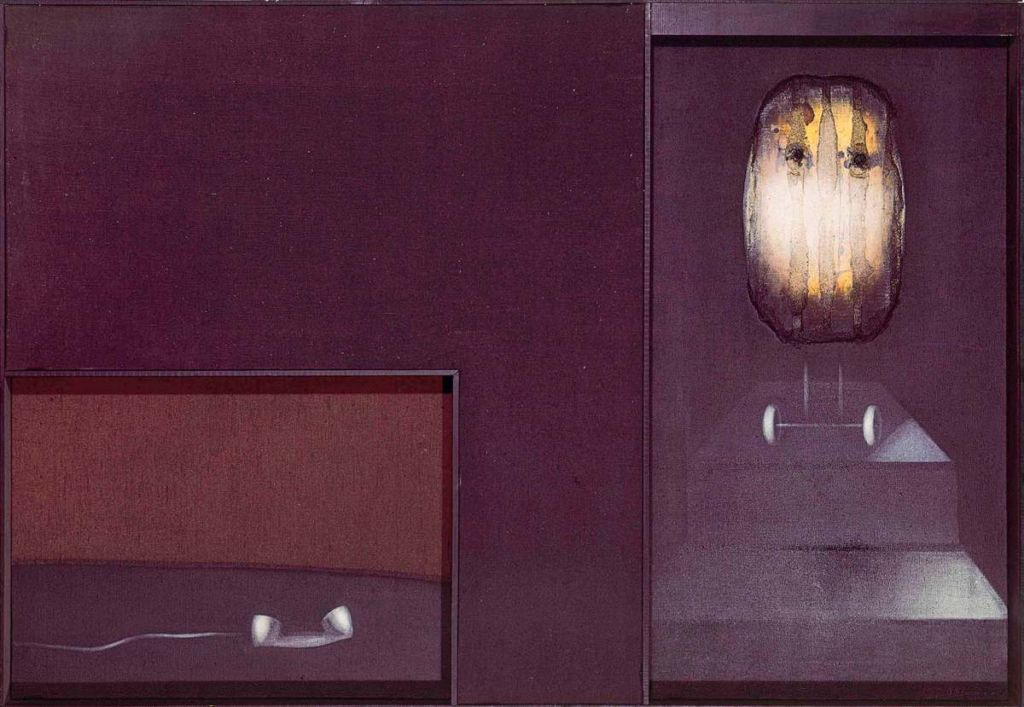In 1971, Richard Demarco, a Scottish gallery director and teacher who was virtually unknown outside his country, embarks on a university tour along the American West Coast. He has brought along images of Edinburgh and, through presentations in his epic accent, explains his summer school project to American students. More than just a backdrop, the city of Edinburgh and Scotland become entirely unique actors in the adventure. Amidst their wild landscapes, students come into contact with nature while discovering the vestiges of ancient Celtic and Neolithic culture. The idea is to experience, for several weeks, the country’s spiritual and artistic energies, tracking their ancient and contemporary manifestations, and translating them into artworks that will be exhibited during the Edinburgh Festival. The success is undeniable: Demarco appeals to the passion of this American youth for travelling abroad, he emphasizes the living folklore and depicts Scotland as a place where the past continues to thrive and current ways of life are infused with culture and spirituality. In his presentations, he depicts a country where New Age meets contemporary art, where you can converse in English with faeries and goddesses.
http://70years.eif.co.uk/
https://www.traverse.co.uk/about-us/the-traverse/history/
Edinburg Arts 1972 brochure, Richard Demarco archives.
Robert O’Driscoll, “A contemporary quest into the celtic and pre-celtic world”, Robert O’Driscoll (ed.), The Celtic consciousness, Edinburgh, Canongate Publishing, Portlaoise, Dolmen Press, 1982, p. 551-572.
The title of Edinburgh Arts in 1979.
Richard Demarco “Edinburgh Arts as a journey from Hagar Qim to Callanish”, in Edinburg Arts Festival Catalogue 1975, To Callanish from Hagar Qim. Exhibition documenting a journey involving on hundred artists, Edinburgh, Richard Demarco Gallery, 1975.
Richard Demarco, The artist as explorer, Edinburgh, Richard Demarco Gallery, 1978, p. 27, quoted by Lucy R. Lippard, Overlay. Contemporary art and the art of prehistory, New York, Pantheon Books, 1983, p. 132.
Julia Farley, curator for the exhibition “Celts: art and identity”, British Museum, October 2015. https://blog.britishmuseum.org/who-were-the-celts/
Jean-Paul Demoule, Mais où sont passés les Indo-Européens ? : Le mythe d’origine de l’Occident, Paris, Seuil, coll. « La librairie du xxie siècle », 2015.
To Callanish from Hagar Qim, op. cit.
Lucy R. Lippard, Overlay, op. cit.
Lucy R. Lippard, Overlay, op. cit., p. 11.
James Nisbet, Ecologies, environments, and energy systems in art of the 1960s and 1970s, Cambridge, Massachusetts, London, MIT Press, 2014, p. 6.
David Bellman (ed.), A Journey from Hagar Qim to The Ring of Brodgar, op. cit. p. 1.
Richard Demarco, The artist as explorer, op. cit. p. 57.
Paul Heelas, The New Age Movement, Oxford, Blackwell, 1996, p. 41.
Richard Demarco, The Road to Meikle Seggie, Edinburgh, Richard Demarco Gallery, 1978, p. 5.
Letter from Honor Bickford 01/07/78-1 Richard Demarco Archives, box 1978.
Demarco easily attains his quorum of students, and in 1972 he organizes the first summer school, called Edinburgh Arts. The program would go on to last eight years before finally being discontinued in 1981, in that particular form, due to financial reasons. The goals, duration and geographical zones change over the years. And yet in every edition, the visits are dedicated for the most part to the prehistoric, Neolithic and Celtic past. It is Demarco’s way of shining a light on a pre-European coherence and, in doing so, resituating Scotland at the heart of contemporary, political and artistic Europe. Demarco surrounds himself with professors in history, art history, and archeology but also with artists. Marina Abramović, Tom Hudson, Paul Neagu and Joseph Beuys come to participate in several editions.
Richard Demarco’s summer schools reveal a post-war Europe that has been rebuilt in a new geo-political context, where the United States now imposes its rhythm and power. The art world at the time is attracted to active and innovative scenes emerging in a local context. Demarco solves this tension by referring to the Celts, turning their mythic past into the foundation for an alternative modernity. But in this kind of recourse to the past, ideology is never far behind. In the summer schools, this passion for the Celts adapts itself to the specific context of the 1970s. Spirituality and politics, margin and center, avant-garde and tradition intersect as Demarco leads long walks that he calls pilgrimages and which, throughout those eight years, trail groups of young artists across Scotland and Europe. Walking plays an essential role in these summer schools, creating the peripatetic base for his teachings and didactic methods.
Edinburgh
All summer school walks begin in Edinburgh. Demarco’s hometown is also the site where his fantasy unfolds: in his eyes it is a city of layered times, where a different era always visible, practically alive and accessible to the walkers. The city was built vertically, sinking into the ground in the Middle Ages; we dig through time like a geological carrot reaching into the sub-strata. On either side of the dried loch dividing the city, the alleys of Old Town trace torturous paths through the Middle Age while the New Town erects neo-classical buildings in well-defined rectangles. To stroll through the city is to stroll through time.
The contemporary is not left to the wayside: Demarco’s idea for the summer schools is a response to the Edinburgh Festival, which he considers a major event in Scottish and European history. Created in 1947, the festival symbolizes a return to international dialogue following the World War. Far-off Scotland suffered greatly during the war; its northernmost territories were the stage for important strategic conflicts (for example at Scapa Flow or in the Orcades islands) that enlisted its populations. And yet it also remains Europe’s finistère, a less exposed space at the far reaches, where geo-political tensions and issues are perceived differently and seemingly at a distance. This is how Edinburgh manages to draw German, British, French and Italian artists and spectators hardly two years after the worldwide conflict comes to an end. These expats, the persecuted, and their former compatriots find themselves united under the pacifying auspices of music. “Our founding ideal vision was never so clearly embodied than in our inaugural year, when, following Nazi persecution, the renowned conductor Bruno Walter was re-united with the Vienna Philharmonic.1” For young Demarco, the festival marks a rebirth. Born in 1930, he had been deeply affected by the bombing of the Edinburgh beach where he played as a child. The heat of the sand after the bombs had fallen became a central element in his own mythology. More generally, the war brought on challenges for Italian Scots looking to integrate; a child of the second-generation, he still preserves this double identity. For him, the festival is therefore a major event; a handful of weeks when the dynamics of a childhood spent at war and the shadow of a scorned community are reversed. Internationalism becomes something positive.
The festival also marks his encounter with the world of the performing arts. A painter and illustrator, Demarco teaches visual art at a Catholic college for ten years. Although he himself was a graduate of Edinburgh College of Art, his involvement in artistic circles begins primarily in the 1960s. In 1963 he participates in the founding of Traverse Theatre2, which quickly becomes a landmark meeting place for artists, writers and intellectuals at the time. In 1966, he opens his gallery, and only naturally begins to organize exhibitions for the festival, looking to involve his visual arts activity within a framework that he cares for, all while inventing new ways of doing that correspond even more with the pedagogical and collective aspect he sought. In the 1960s and 70s, summer schools were in vogue, especially amongst American students who saw them as an easy way to earn university credit while discovering the Ancient World. In 1971, Demarco participated in the Aegina Summer School organized by Christian Zervos on the Greek island Aegina, and inspired by this opportune context, decides to establish his own version.
From 1972 to 1974, the accent is on Scotland. Explorations begin and end in Edinburgh. The lessons and the evening program focus on Scottish heritage: students learn about the history, poetry, music and art of the region. Demarco sets up a partnership with the University of Edinburgh so that students from Scotland and abroad can integrate the summer school to their coursework. In the three first years, the program appears rather academic: days are divided into workshops with artists and afternoon lectures at the university, whereas evenings are filled with traditional music concerts or poetry readings. After several weeks working together in this manner, students create their own artworks or can follow the creative process of invited artists who participate in an exhibition at Demarco’s gallery by presenting their works or helping to design the event. Creation in and of itself seems to be secondary to the program. There are large blocks of time left unscheduled so students may also participate in workshops of their choice in disciplines like dance, mime, music, visual arts, theater. “The emphasis will not be on study within the framework of a classroom but on personal contact with artists on their own high professional level (…)3”. Dialogue, exchange and community are artistic experiences unto themselves.

Richard Demarco, Edinburgh Arts 1974. Near Meikle Seggie. Kinross-shire, Scotland. Courtesy of Demarco European Art Foundation & Demarco Digital Archive, University of Dundee
The road to Meikle Seggie
In 1972, Demarco conducts an experiment that winds up crucial. Turning his back on the Edinburgh Festival after frustrations over what he judged to be a deteriorating, superficial programming and atmosphere, he leaves the city on foot. In Edinburgh, nature seems to push up directly against the doors of every building. The massive silhouette of Arthur’s Seat, the mountain that was ostensibly the backdrop for King Arthur’s coronation, looms at the city gate. Its bare slopes teem with gorse in the spring, their fragrance wafting through the city, flowers invading every last corner of even the urban spaces. The tangential is ever-present; nature, space, and silence offer themselves so wholly to the eyes that they are part of the city, imbuing the very geography with a sense of escape.
Demarco follows a road that leads outside the city. He pursues what he believes are markers on the landscape; he reads the slope of a hill, the position of a tree, like an ancient, tender map to guide him through nature. As he walks, he comes across a road sign pointing in the mysterious direction of Meikle Seggie. It turns out to be a farm that has disappeared, presaged only by an obsolete sign. From that moment on, Demarco sees it as the symbol of the spirit’s journey, a way of establishing a connection between self and the environment. On this road, art and life find a new way of connecting. “The supreme reason and impulse for any journeying is inevitably for us to see, perhaps for the first time, the extraordinary aspects of life which we had begun to call ordinary or take for granted.”

Richard Demarco, Edinburgh Arts 1977. On the road to Meikle Seggie, Kinross-shire. Courtesy of Demarco European Art Foundation & Demarco Digital Archive, University of Dundee
From 1973 on, Demarco includes the road to Meikle Seggie in every Edinburgh Arts program. It becomes synonymous with an inner journey. One that is about being available to the space and nature, and seeing every mark, detail or coincidence as a sign, supporting an at times religious, at times playful kind of projection. The road is full of markers that work a kind of spiritual power that Demarco calls “The Goddess”. He writes: “The truly creative soul naturally seeks out the Goddess, knowing She represents psyche, the very ‘breath’ of artistic inspiration. (…) The artist must be forever on guard, forever prepared to leave any secure and safe place of living and working in order to search for Her.” And so walking becomes a true pilgrimage, the goal being erased in the wake of the journey experienced in and of itself.
Taking sail
Eventually, the road to Meikle Seggie changes in scale. From 1975 to 1978, students at Edinburgh Arts find themselves leaving the Scottish border behind on a journey through all of Europe. In 1975, Malta and Italy become the first two stops outside the United Kingdom to be integrated to the voyage. Edinburgh Arts takes on the title “To Callanish from Hagar Qim”; connecting the archeological remains of Hagar Qim on the island of Malta to those in Callanish, on the Isle of Lewis in the Outer Hebrides. By leaving British territory that year, Demarco determines a major element in his thinking and pedagogy. He shows, through example, the formal proximity of distant geographical sites, suggesting the existence of a unique people of travelers, builders and artists who might have swarmed across Europe at the start of early Antiquity. In a sense, he is now guiding students along the traces of his ancestors. The teachings he wishes to transmit emanate directly from what he knows, perceives and imagines. Every marker becomes, in his eyes, a clue operating across time, suggesting universalism within a repertory that is both formal and spiritual. In Demarco’s view, the Celtic and Neolithic vestiges are proof of the fundamental connection existing between art and spirituality. A spirituality that is plural, evolving and adaptable depending on the people and the era. The trips organized through Edinburgh Arts aim to re-establish a link to various and for the most part indeterminate spiritual forces that are meant to guide the artists, accompany them and offer depth to their artworks. The Celtic gods are an important reference for Demarco, who relates them to his Catholic reference of Lugh, patron of the arts. But as man travels, the names and avatars of these divinities vary: Demarco repeatedly emphasizes that the saints and gods of different eras are the expression of an archaic divinity that adopts new names over time. The voyages through Europe are therefore a kind of research into this divinity and its local variations.
In 1978, Demarco sees a BBC documentary on Darwin where he learns about the existence of the Marquees ship, a modern replica of Darwin’s Beagle. He manages to hire the ship for the summers of 1979 and 1980, taking his students on a journey that is now by water. Throughout these two seasons, the ship transforms into a studio, with promiscuity reinforcing the sense of community. Daily discussion become the site for open and dynamic teaching, as described in an article published by a former participant in the voyage of 1977 and 19794, Robert O’Driscoll, who provides the minutes of an afternoon discussion on the Marquees.
The journey becomes longer and longer, and even more ambitious, extending out to France, Sardinia, Sicily, the Cyclades… And yet Scotland remains at the heart of the program: “A Quest through Europe or the Long Way Round to the Edinburgh Festival.5” The route thought out by Demarco creates a loop connecting Edinburgh and more generally the Scottish Celtic past with the past of other European countries. As such, he builds a human geography in which margin and center are deeply re-thought and re-evaluated.

Publication for Edinburgh Arts 1979. Courtesy of Demarco European Art Foundation & Demarco Digital Archive, University of Dundee
The Celtic trail
By referencing the Celtic past of Europe, Demarco seeks to bypass the Renaissance in suggestion of another chronology, one not based on the artistic, intellectual and scientific power of Italy, but on northern Great Britain. “They should see how Europe is not just a Renaissance world, but, on its outer fringes, how it is also capable of producting the culture of the Celtic world, and even before the Celts, in prehistoric times, through the spiritual vitality of their predecessors, a life style in perfect harmony with the movements of the sun moon and stars in relation to a complicated scientific concept of time and space,6” he writes in 1975. For him, the only way to redefine the geography of intellectual power is to connect to Celtic history and prehistory. And so he aims to underline an alternative voyage for the arts, one founded on the apparent and contemporary margins of Europe. This journey takes him across Scotland, Ireland, Malta, Yugoslavia and Poland. The Celts are, to him, “the perfect representative of all the peripheral and rejected cultures provided by the European experience. For the Celt is the best-known European equivalent of the Hopi, the Apache… the best-known of the peripheral European cultures threatened by the twentieth century7”. By drawing this analogy between the Celts and the Hopi and Apache, Demarco refers to peoples who are not only still alive and completely identifiable by his American students, but who are also engaged in activist, political and legal processes to obtain state recognition. The 1960s and 1970s are indeed a time when Native Americans begin to organize politically, with the creation of the American Indian Movement in 1968. Numerous political actions occur in the 1970s, particularly the Bureau of Indian Affairs takeover in Washington in 1972 and the “Longest Walk” from San Francisco to Washington in 1978. Demarco’s reference is an intentional move to integrate the Celts into an international movement for the political recognition of local cultures. It also helps to make the Celts a people dominated and oppressed by occupiers. More broadly, the primitivist fantasy of a special bond with nature and the Earth, of a specialized knowledge and familiarity with a spirituality seen as ancestral is, in this case, repeated in clichés often applied to native as to a number of colonized peoples. Demarco’s fascination for the Celts rests upon an idea of wisdom, spirituality and science rendered more “true” for having been produced in proximity, knowledge and respect for nature. This redefinition of values framed through opposing modernity/tradition echoes an underlying trend of the 1970s. “‘Celtic’ is still a word that creates a sense of difference, but what began as a label applied to outsiders by the ancient Greeks has now been proudly embraced to express a sense of shared heritage and belonging, reflecting a long history of regional difference and independence.8” In the European context however, interest in Celtic culture has taken on various connotations throughout history. Germinating since the 18th century in Scotland, the Celtic Revival spreads throughout the 19th century as part of the so-called Scottish Renaissance that marked a renewal of art and humanities in the region. Interest in the Celts has always been associated with political debate9. Celtic history is notably studied in relation to the history of the first European peoples: it seems the Celts were direct descendants of the Aryans. The Nazis saw their dispersion across Europe as justification for their own pan-Germanism. Nazi archeologists, following the progression of their troops, sought out clues indicating Celtic presence in the conquered territories, trying to obtain well-founded historical proof for their policy of conquest. The myth of a common origin for European peoples is based on ideological foundations that change over time. In the 1970s, the war in Ireland, but also the global context of decolonization, constitute a context radically different from that of the World War.
Regardless, Demarco adopts the idea of a Celtic diaspora in Europe and sees it as a justification for the European Union: although the ideology is far opposite from pan-Germanism, the argument’s underlying structure remains. Demarco’s archives show that in the northern localities of Great Britain, it was quite trendy to be interested in the Celts: he collects excerpts from books and newspaper articles cut out of the Scottish International, Scottish Field, New Society, Glasgow Illustrated, The Irish Examiner. But if Demarco is interested in the Celts, and in Neolithic peoples in general, it is due less to a fascination for a people that have remained “pure” and identifiable than to his interest in a formal repertory that seems to have not only have withstood the ages, but that resonates with many contemporary works.
Here, the influence of the psychoanalyst Carl Gustav Jung is patent. Demarco mentions his theory of archetypes and symbols of individuation, which study forms such as the cross or mandalas as human constants10. The reappearance of symbols and their distinctive qualities show that they can be understood, felt by the students without having to be explained: the message of the megalith is universal. Land art and minimalism use forms that have been compared to Celtic traces and symbols, notably in Lucy Lippard’s work Overlay (1983)11. “Our lack of shared beliefs and values contributes to our fascination with ancient images and monuments. They are often attractive precisely because their meaning cannot be deciphered. This leaves a free field, a tabula rasa in itself, where an artist can be formally influenced by these images as though they had no meaning, and at the same time can capitalize on meanings sensed, if not seen12.” This idea is fundamental to understanding Demarco’s way of thinking. The Celts are our shared ancestors; their forms and Neolithic forms are based on a communion with nature inherent to all human beings. The summer schools therefore mean to reconnect young artists with this message. Countless photos depict them peacefully sitting at different sites, circling the standing rocks, enlaced with the ruins, having a direct, physical and sensorial experience of these vestiges.

Richard Demarco, Edinburgh Arts 1974. Participants at Temple Wood stone circle, Kilmartin Glen, Argyll, Scotland. Courtesy of Demarco European Art Foundation & Demarco Digital Archive, University of Dundee
Lines of energy
One integral aspect of the Edinburgh Arts teachings was to develop sensitivity for the energies of the Earth and the past. Atomic energy, the oil crisis of 1973 (about which Demarco organized a conference together with Joseph Beuys) unarguably helped to place the word “energy” at the heart of public debate. But the way that counter-culture – and little by little pop culture—invokes the term is different. “As ‘energy’ became a vital term, with it followed a transformative understanding of the ecosystem as an interconnected formation that moves through organisms instead of emanating from them.13” The Earth is not only an organism, but contains its own energy flux. In the New Age movement gaining popularity in the 1970s, especially amongst American youth, developing an awareness of these energies was crucial; it is what allows one to understand our interaction with nature. To be attentive to what comes from the Earth within our own bodies is already a step toward the ‘full consciousness’ put forward by oriental philosophy. The discourse on trance and experimentation with psychedelic drugs also use the term “energy” in reference to forces circulating within the body, liberated by drugs, and that each person might observe while on their trip. In the summer schools, this term covered a perspective that was both geographic and historical in scope: their journeys tracked both traces of the Earth and traces left behind by the ancients. To be more precise, the two generally went hand-in-hand, since “the journey sought out points of energy defined by stone circles14.”
For Demarco, energy is strongly connected with the Earth and imbued with a resolutely spiritual sense. His oft mentioned “Goddess” or “Earth Goddess” represents a universal spiritual force that he can track through history. He associates it with the “power of all pagan goddesses—anathema to the Presbyterian souls of the late 17th century who failed at understanding the Christian religion as a new form of manifestation for the Goddess presence15.” This idea explains in part the importance that Demarco gives to primitive divinities or saints like the Celtic god Lugh or Saint Margaret. For Paul Heelas, a specialist in New Age movements and religions, “New Agers are inclined to go back to the past. Some dwell on ancient India or Egypt; others on the pagan times of Europe. Some refer to the early gnostics, others draw on the Christian mystical tradition, perhaps concentrating on its flowering in northern Europe during the Middle Ages.16” Demarco refers to the “Goddess” as a key element in the quest for self-knowledge, but also in artistic creation. He establishes what he sees as an essential and necessary link between art and spirituality. And so it follows that his summer schools should stand against the notion of contemporary art as cut off from spiritual roots. Demarco writes with religious verve on the necessity to reconnect the artist with the Earth: “We have forgotten how to seek out and court the Earth Goddess, She who is our Mother, from whose womb we have come, and into whose care we have been placed. The truly creative soul naturally seeks out the Goddess, knowing She represents psyche, the very ‘breath’ of artistic inspiration17.”
Demarco’s summer schools clearly resonate with the contemporary tendency to re-evaluate the spiritual. And though he may choose Lugh, patron of the arts, and the “Goddess” as his ongoing references, the journeys offered through Edinburgh Arts are sufficiently open and blurred to welcome all kinds of people in search of fulfillment. The personal accounts preserved in the Demarco archives at the Scottish National Museum of Modern Art reveal the extent to which his journeying touched participants: “We anticipate that this will be related to geographical sites. But what you don’t tell us about (…) is that we are going to meet aspects of our own identity that we never knew existed 18.”
Translation by Maya Dalinsky
The research the author is presenting here has been awarded a grant from INHA and Institut Français and has been conducted as a visiting scholar at St Andrews University.
Thanks to: Laurence Bertrand Dorléac, Institut Français, Institut national d’histoire de l’art (INHA), Centre allemand de l’histoire de l’art (Thomas Kirchner), National Gallery of Scotland (Kerry Watson and Fiona Menzes), Terry Newman and Richard Demarco.
Cover: Richard Demarco, Edinburgh Arts 1975. Participants at the neolithic stone circle of Calanais (Callanish) III, Lewis, Outer Hebrides. Courtesy of Demarco European Art Foundation & Demarco Digital Archive, University of Dundee

